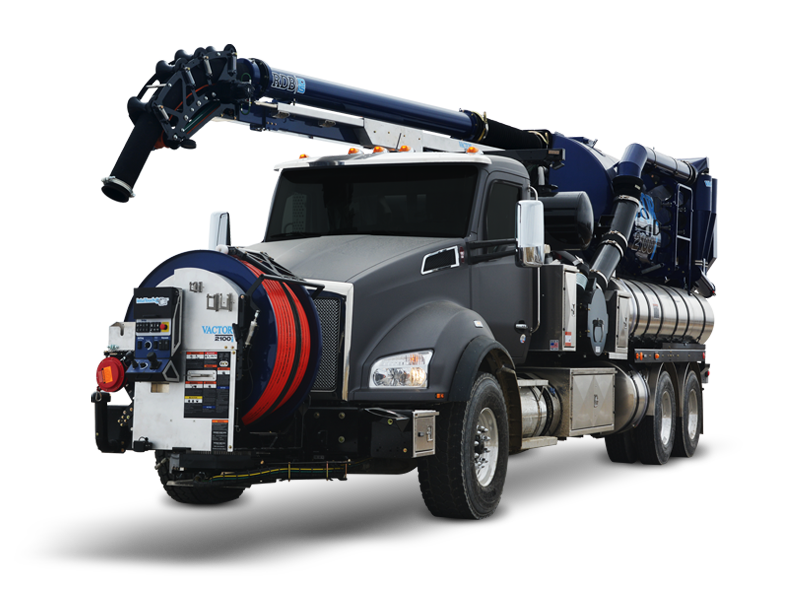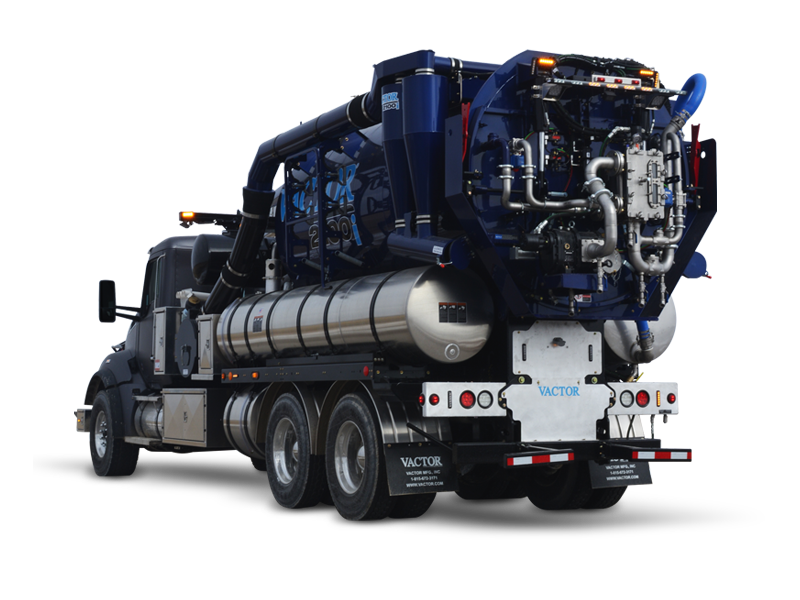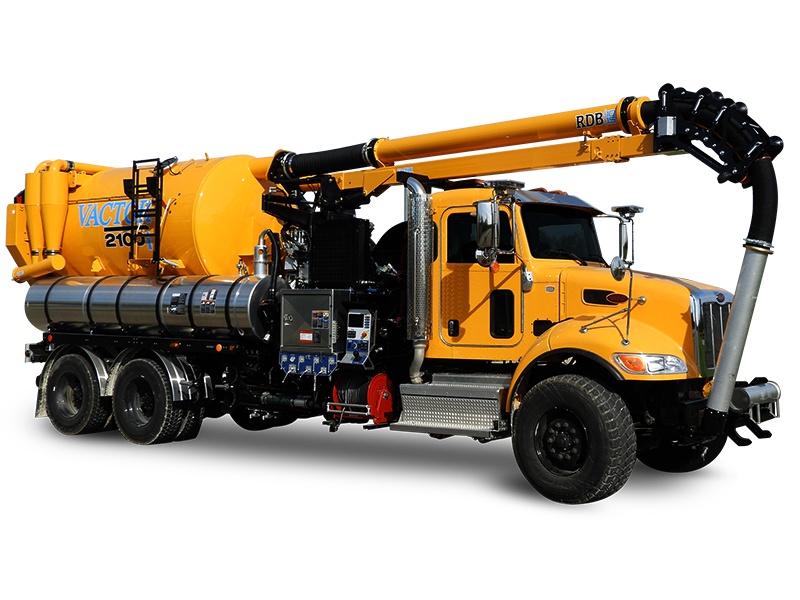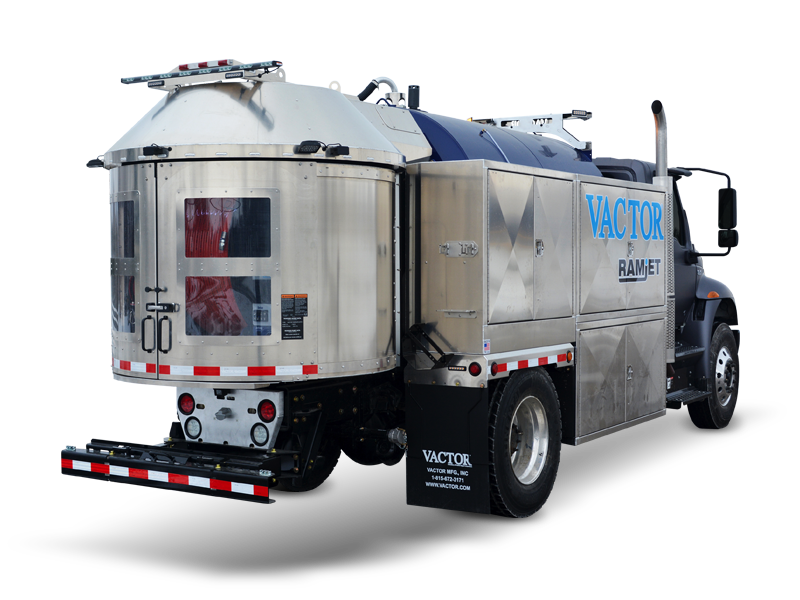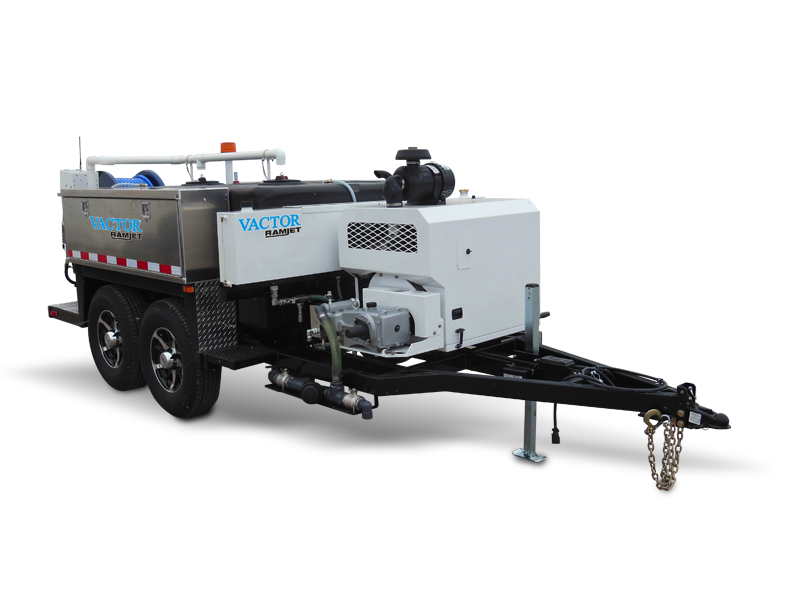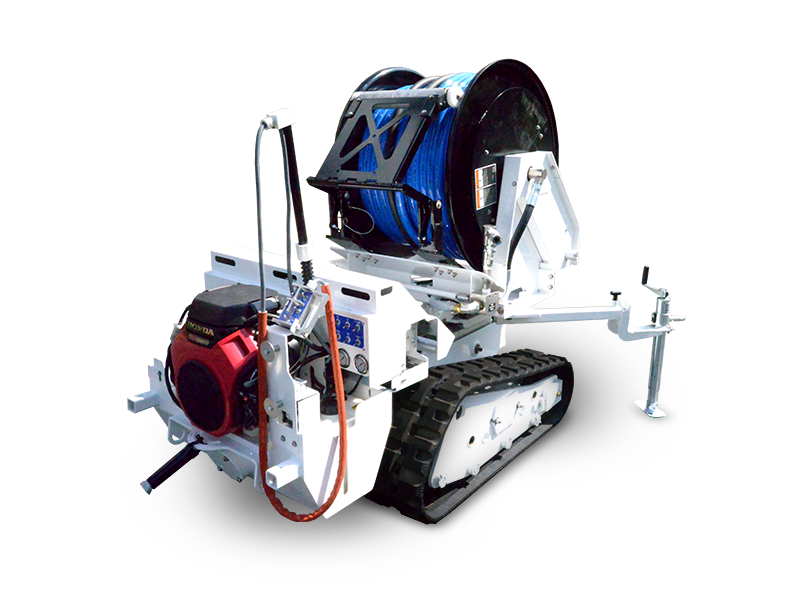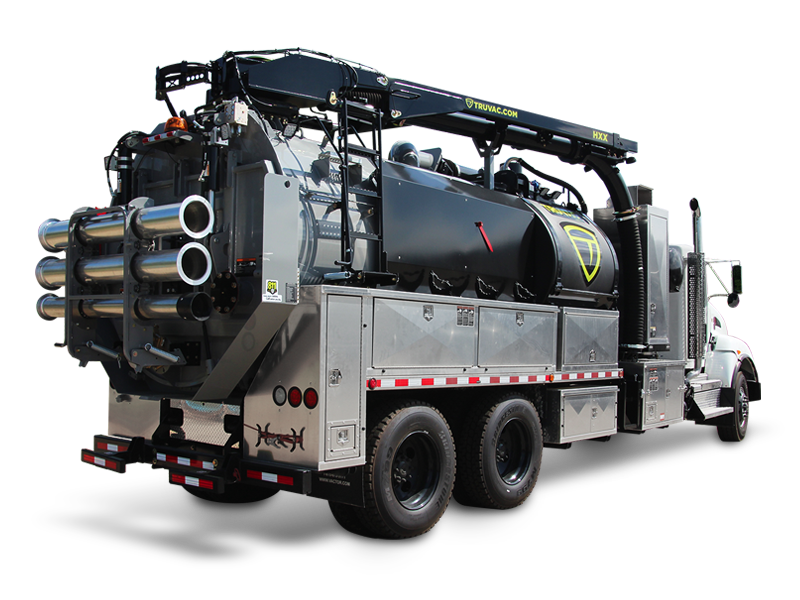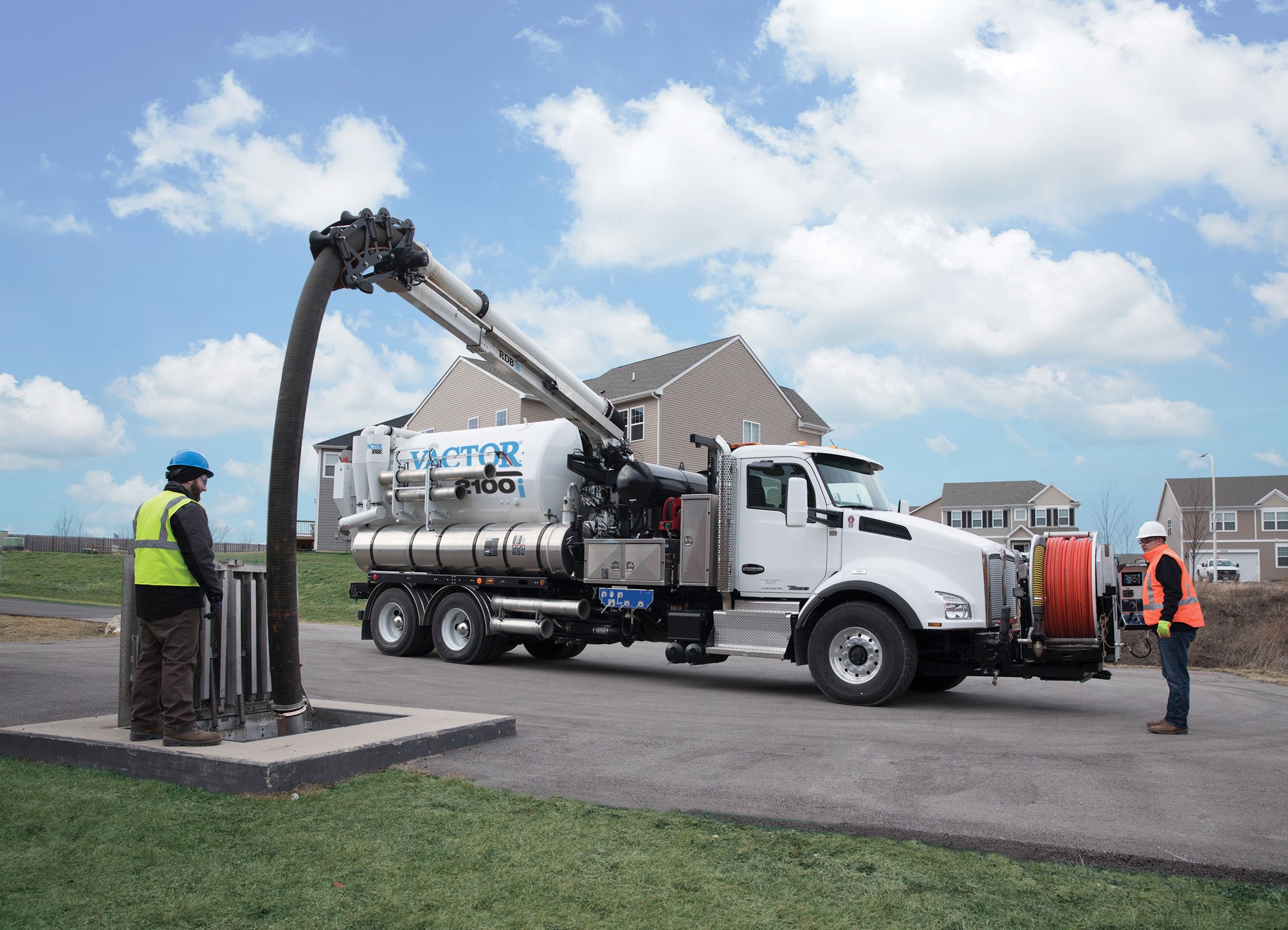Storm Drain Cleaning and Maintenance Guide
by Vactor Team, on Mar 12, 2025 10:24:42 AM
Storm drain systems are vital yet often overlooked components of urban infrastructure designed to manage excess rainwater. Understanding these systems and their maintenance is crucial for a community's well-being.
When the skies unleash a torrential downpour, the role of storm drains becomes crucial, as a clogged drainage system poses a significant threat to personal property and public safety. This article serves as a guide to the essentials of storm drain cleaning, highlighting the importance of regular maintenance, the consequences of neglect, and ways to maintain the longevity and effectiveness of storm drainage systems. Join us as we explore the world of stormwater management and learn how to safeguard against the elements.

Understanding the Stormwater Management System
A stormwater management system is an engineering control network designed to absorb, store, and channel rainwater and melting snow away from urban areas to prevent flooding and erosion. These systems are essential for raised urban environments, where natural land absorption is minimal due to water-resistant surfaces, such as concrete and asphalt.
These systems comprise various elements, including but not limited to pipes, trenches, basins, and green areas like bioswales, which all work in tandem. The green spaces, such as bioswales, are strategically placed to absorb low flows or effectively channel runoff from heavy rains, filtering pollutants naturally in the process.
In urban environments, where permeable surfaces are limited, stormwater management often involves the use of underground vaults. In these systems, the water management begins at the street level with gutters, also known as curb inlets or catch basins, which collect runoff from the surrounding areas. From there, the water travels through a network of underground pipes leading to a discharge point. This point could be a nearby stream, lake, ocean, canal, or a man-made retention basin, where the water is eventually absorbed or continues its journey as part of the natural water cycle.
It's important to note that storm drains may inadvertently collect not just water but also pollutants. These include trash and debris, as well as substances like oil, grease, antifreeze, minerals, paints, and pesticides, which are carried along with the stormwater runoff.
These vault structures temporarily hold stormwater runoff, regulating its release into the waterways or sewers, thus protecting areas from overflowing during peak flows.
Regular upkeep, including the maintenance of catch basins and trench drains, is essential to ensure these systems function efficiently. This maintenance is critical, not only to prevent water logging and potential property damage but also to safeguard the environment from the pollutants carried by unmanaged stormwater.
Public storm drainage systems are usually the responsibility of the county or local municipality, while private storm drainage maintenance falls to property owners or associated entities. Both require regular inspection and timely cleaning to avoid blockages that could lead to severe flooding.
The Impact of Heavy Rains on Storm Drainage Systems
The significance of routine storm drain maintenance cannot be overstated when it comes to protecting urban areas from the destructive effects of water. Timely and efficient servicing ensures a free flow of water, greatly reducing the likelihood of flood-related property damage. Catch basins and drains need to be cleared of obstructions such as litter, organic debris, sediment buildup, and any other blockages to function correctly. The presence of storm drains near residential properties helps to prevent not only local flooding but a range of subsequent problems such as foul odors, dying grass, and the unwelcome proliferation of insects, rodents, and mold—all consequences of stagnant water.
The consequences of inadequate storm drain maintenance ripple outwards, affecting more than just the immediate vicinity of the clog. Water pooling around inadequately maintained drains can create dangerous driving conditions, such as hydroplaning, reduced vehicle traction, and impaired visibility during rains. When overwhelmed during storm events, the consequences of poor maintenance can be severe, resulting in flash floods and localized flooding that leads to property damage, including eroded landscaping, inundated homes, and vehicles damaged by water.
Not only does a clogged drain impede the proper flow of water, but it also can lead to the spread of waste into local waterways, affecting water filtration systems and the environment. Thus, regular cleaning and maintenance of storm drains are essential to maintaining the functionality of these systems and to prevent the undesirable outcomes of clogged drainage.
Importance of Proper Storm Drain Maintenance
Municipalities must invest in storm drain maintenance as a preemptive measure to protect their communities, infrastructure, and natural water bodies from the adverse effects of improperly managed stormwater. The water funneled into storm drains generally does not receive treatment before being discharged into rivers, lakes, and oceans. Hence, keeping storm drains clear is also crucial for protecting water quality in natural water bodies. It is evident that the maintenance of storm drain systems is as much about preserving public safety and environmental health, as it is about the practicalities of managing rainwater.
Regular maintenance typically involves the removal of accumulated debris using specialized equipment. Services may deploy a range of vehicles, such as Combo Sewer Cleaning Trucks, and Vacuum Trucks designed to clean and clear the intricate storm drain systems. These professional cleaning services play a crucial role in ensuring that city streets, parking lots, and residential areas remain safe and dry, effectively managing stormwater runoff and reducing the risk of flooding.
Using methods such as high-pressure water jetting, professionals can remove obstructive materials like tree roots, dirt, and silt efficiently, without resorting to invasive and costly excavation. In the long run, the importance of regular storm drain cleaning cannot be understated as it is directly linked to the prevention of flooding and maintaining clean water systems.
Types of Storm Drain Cleaning Services
When considering storm drain cleaning services, various methods are available to ensure that stormwater systems function properly. Among these services, high-pressure water jetting, also known as hydro jetting, stands out as a fast and effective way to clear drains. It utilizes a high-pressure water stream to dislodge and remove debris, including tree roots, sediments, and waste materials that can cause blockages. Professional plumbers or specialized technicians are required to operate the hydro-jetting equipment due to its complexity and potential hazards if not used correctly.
For more comprehensive issues, where a storm drain system may be damaged or poorly structured, repairs or relining might be necessary. By using advanced trenchless technology, service providers are able to fix and maintain storm drainage systems with minimal disruption to the surface, maintaining the aesthetics of the community while ensuring proper functionality of the stormwater management system.
Catch basins also play a vital role in stormwater management. Cleaner trucks, or combo trucks, combine the hydro jetting and vacuum functions to clean out these structures. They remove sludge, trash, and sediments from the basins, preventing pollutants from being swept into natural waterways.
In terms of preserving the condition of the drains, regular maintenance is key. This includes not only cleaning the drains themselves but also caring for the surrounding area. Sweeping streets, clearing debris away from storm drain inlets, and properly disposing of waste can significantly decrease the likelihood of clogs. The recommended frequency for these cleaning measures is at least annually, but this may vary depending on the area's exposure to dirt and debris.
To minimize the need for these services, community engagement plays an important role. It's essential to maintain a clean environment by picking up trash and correctly disposing of yard waste to prevent storm drains from clogging in the first place.
Maintaining and cleaning storm drains is an important part of keeping our communities and waterways clean, and avoiding the dangers and damages of flooding. Vactor Manufacturing is proud to manufacture equipment that aids in this process and contributes to improved infrastructure and a cleaner world.

